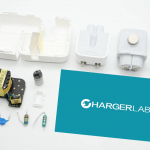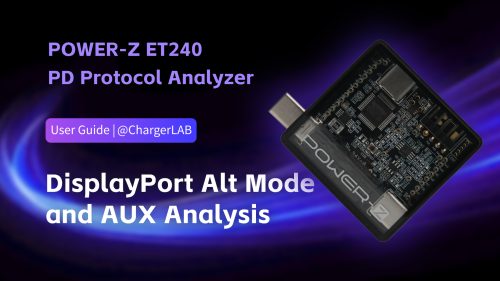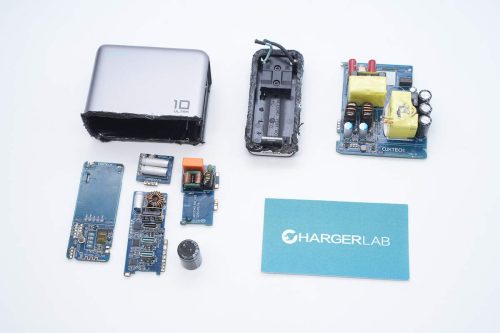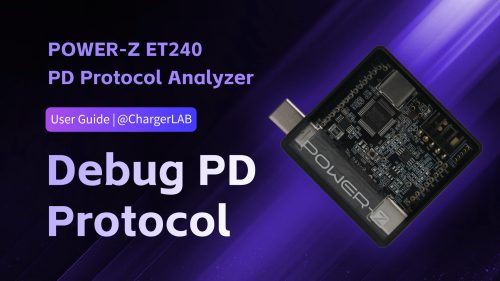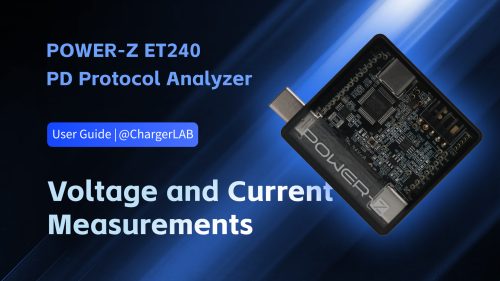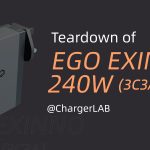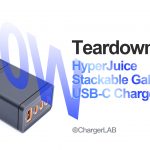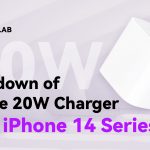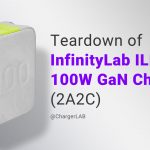Introduction
The Apple 12W USB-A Charger, adopting a synchronous rectifier instead of the traditional Schottky diode, is the most powerful of the Apple 5V chargers. It supports 5V2.4A and has improved efficiency.
This charger is the only Apple charger supporting the 5V2.4A protocol. As expected, ChargerLAB has gotten this traditional 12W charger, and we will take it apart.
Unboxing

The front of the packaging box is printed with the Apple logo, the product name and the appearance.

In the back are the product names in several languages, usage and the CE mark.

Product parameters sticker is attached to the side.

The charger and manual are in the packaging.

It has a classic square design, a white PC casing and rounded edges.

Parameters like Model: A2167, Input: 100-240V~50/60Hz 0.5A, Output: 5.2V2.4A, and several certifications are printed on the one side.

It is equipped with foldable American standard prongs.

The removable design makes it easy for users to change prongs to meet different needs.

T-shaped part

The USB-A port is white.


Its size is about 46 X 46 X 28 mm (1.81 X 1.81 X 1.1 inches).

Its net weight is about 66g (2.32oz).

The ChargerLAB POWER-Z KT002 finds that the USB-A port supports Apple 2.4A protocol.
Teardown

Take out the PCBA module. The isolation plate used for insulation corresponds to where the USB-A base is. The T-shaped part that welds wire for the charger is for grounding.

The primary filter capacitor is insulated with tape wrapped around the transformer, and a plastic sheet is inserted between the USB-A receptacle and the transformer to strengthen the insulation.

The AC input receptacle stamps a fixed metal piece, and the welding wire is connected to the PCBA module.

The power input wire, cold-pressed terminal and heat shrink tube were welded to the PCBA module.

The ground lead.

The transformer and winding tape is insulated and fixed with glue.

A PCB slotting and isolation board insulates the primary power supply from the secondary one.



PCBA Module's size is about 21 X 40 X 20 mm (0.82 X 1.57 X 0.78 inches).

The bottom of the power PCBA module is the primary filter electrolytic capacitor, and the top is the switching transformer, USB-A receptacle and output filter electrolytic capacitor.

On the back, there is a bridge rectifier consisting of four diodes in the lower right corner, the middle is the primary master chip, and on the right of the PCB is the optocoupler feedback.
It is fixed 5V, with a synchronous rectifier output. Voltage feedback is via optocoupler, and protocol identification is from the resistor and supports the Apple 2.4A protocol.

Let's start to analyze the components.

The fuse resistor is externally wrapped with black tape for insulation and input overcurrent protection.

The input common mode choke is surrounded by a magnet ring and wrapped with external insulation tape from Sumida.

The primary side of the power supply is equipped with a filter capacitor, a common mode choke, where the switching tube is dissipated through a thermal pad with the magnetic core of the transformer.

Two high voltage filter capacitors from Nippon Chemi-Con, are for the primary filter and support 400V 12μF.

This is the differential mode choke between the two capacitors, whose pin is covered by an insulation tube.

The primary master chip of screen printing 601A is in QFN packaging

This is the filter capacitor for the primary master chip power supply.

The primary switch tube is from Infineon, with a screen printing of 80R1K4P7, but the actual model is IPS80R1K4P7, which belongs to the CoolMOS P7 series NMOS. It withstands a voltage of 800V and a thermal resistance of 1.4 ohms, with an IPAK SL packaging, the TO-251 packaging.

The Sumida OEM transformer's date code is 2143, indicating that Apple is still producing this charger.

Two Y capacitors are stacked together.

This is one of the blue Y capacitors.

The other blue Y capacitor's pins are insulated with heat shrink tubes.

The L217 SMD optocoupler is for output voltage feedback.

The solid capacitor's pins are held through the pad with components underneath to improve space utilization.

Below the output wire and filter capacitor is the synchronous rectifier, whose screen printing is 658L, from Onsemi, with the actual model NTTFS5C658NL. The NMOS withstands a voltage of 60V, and its thermal resistance is 5mΩ, using the WDFN8 packaging.

The DCM-mode synchronous rectifier controller from Onsemi has a screen printing of ACD with the actual model FAN6240. It supports the maximum operating frequency of 200kHz. The synchronous rectifier and synchronous rectifier controller of the 12W Apple charger's early version are from TI, but later the supply manufacturer changed.

The output solid filter capacitor supports 1200μF 6.3V.

The serial number of the charger is printed on the inside of the USB-A receptacle.

OK, that's all for the teardown of the Apple 12W USB-A charger A2167. Let's take a "family portrait."
Summary of ChargerLAB
Although this Apple 12W charger used a synchronous rectifier back in the day, it was still not a popular charger. It supports 5V2.4A and can reach the maximum output power of the charger when charging for the Lightning port.
Related Articles:
1. The Prices of the Apple New 35W Dual USB-C Charger Vary by Region
2. What's Difference Between Apple 20W and Apple 18W Charger
3. Teardown of Apple 143W Power Adapter (For all-new 24” iMac)

